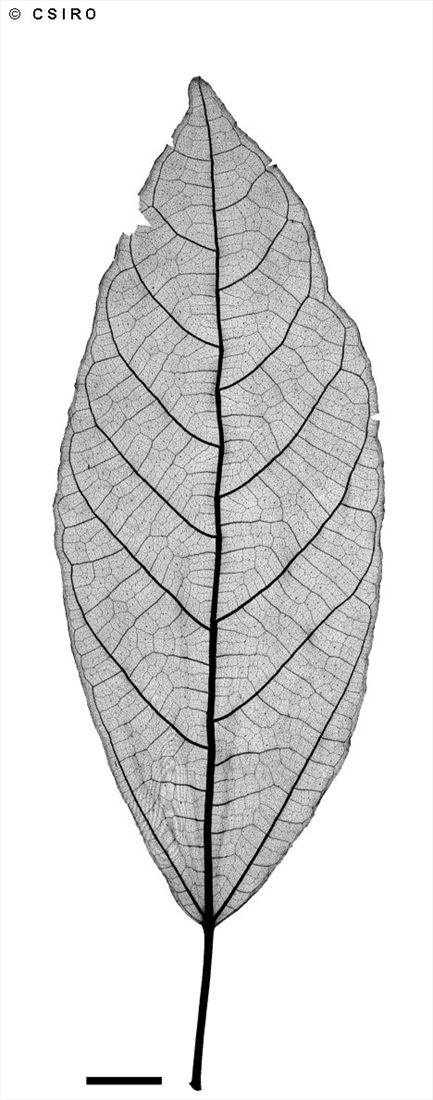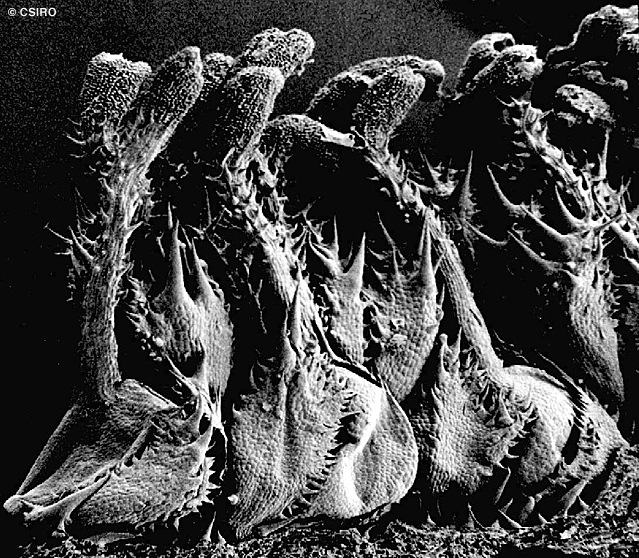Australian Tropical Rainforest Plants - Online edition
Ficus fraseri Miq.







Miquel, F.A.W. (1848) Hooker's London Journal of Botany 7 : 235. Type: In Nova Hollandia, ad fl. Brisbane. (Fraser n. 154! in Hb. Hook.).
Figwood; Fig, Fraser's; Fig, Sandpaper; Fig, Watery; Fraser's Fig; Sandpaper Fig; Watery Fig
Leaf blades about 8-13 x 4-6 cm, with a rough and sandpapery feel on both the upper and lower surfaces. Stipules about 0.5-0.8 cm long. Petioles grooved on the upper surface.
Flowers pedicellate. Tepals +/- spathulate, outer surface and margin clothed in pale pink, spine-like hairs. Male flowers produced around the ostiole. Apical bracts projecting beyond the body of the fig. Bracts at the base of the fig usually three or four. Lateral bract on the outside of the fig body.
Figs pedunculate, +/- ovoid, about 15-20 x 13-17 mm, minutely scabrous. Orifice +/- closed by interlocking apical and internal bracts.
Cotyledons almost orbicular, about 3-4 mm long. At the tenth leaf stage: leaf blade elliptic, apex acuminate, base obtuse or auriculate, margin crenate, both the upper and lower surfaces sandpapery from short bristle-like hairs; petiole clothed in bristle-like hairs; stipules elongate-triangular, hairy, shed early. Seed germination time 18 to 60 days.
Occurs in CYP, NEQ and CEQ and southwards as far as coastal central New South Wales. Altitudinal range from near sea level to 800 m. Grows in well developed upland rain forest on a variety of sites but is probably more common in drier, more seasonal rain forest. Also occurs in Vanuatu and New Caledonia.





